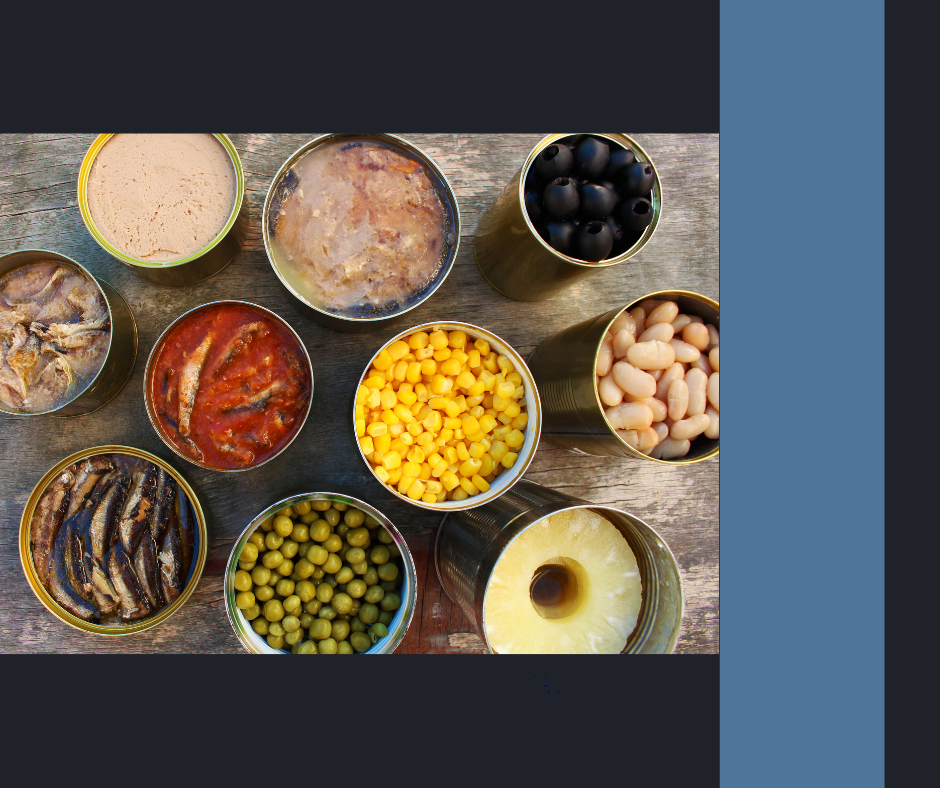
Emergency Kit Food: 3-Day Supply
Share
When disaster strikes, having an emergency kit ready can make all the difference. One of the most important parts of any kit is your 3-day food supply. This is the minimum amount of time recommended by FEMA and emergency preparedness experts to be self-sufficient in the event of a natural disaster, power outage, or evacuation.
There are a lot of different kinds of prepackaged food ready for emergency kits. The military uses MREs (Meal, Ready-to-Eat), But you could also find multiple emergency prep companies that offer ready to eat meals or meals you just need to add water or heat up. You could also find meal bars that are packed so tightly they are like a brick but contain all the calories you would need. If you choose to purchase these types of already made meals, be sure to taste them first so that you know that you like them and will eat them. In an emergency you will be glad that you have something you like and that your body can handle, instead of dreading eating because it tastes horrible or causes your guts to hurt simply because your body is not used to processing food compacted into a brick.
You can pack an emergency kit with food that you already know and love from your pantry. If that's what you plan to do, this article is for you. Here’s a simple guide to help you choose the right foods that are practical, long-lasting, and nourishing.
What to Look for in Emergency Food
When building a 3-day emergency food supply, focus on these key traits:
- Shelf-Stable: No refrigeration required.
- Ready-to-Eat or Easy-to-Prepare: Minimal cooking or water needed.
- Nutritious: Include protein, fiber, and essential nutrients.
- Compact and Lightweight: Easy to store and carry.
- Comforting and Familiar: In stressful situations, familiar foods can help calm nerves.
Recommended 3-Day Emergency Food List (Per Person)
Plan for 2,000–2,500 calories per day, depending on age, health, and activity level.
Here's a sample food list with potential ideas:
1. Proteins
- Canned meat (chicken, tuna, salmon, Vienna sausages)
- Beef jerky or meat sticks
- Nut butters (peanut butter, almond butter)
- Vacuum-packed tofu
2. Fruits and Vegetables
- Canned fruit (in juice or water - you can drink it)
- Canned vegetables (low sodium)
- Dried fruit (raisins, apricots, mango)
- Fruit or veggie pouches (like applesauce or baby food)
3. Grains and Carbs
- Crackers or flatbread
- Instant oatmeal packets
- Granola or protein bars
- Trail mix with nuts and seeds
- Shelf-stable tortillas or rice cakes
4. Comfort and Energy Foods
- Hard candy or chocolate
- Electrolyte drink packets or powdered drink mix
- Instant coffee or tea bags
- Shelf-stable pudding or energy gel packs
5. Special Needs
- Infant formula and baby food (if applicable)
- Gluten-free or allergy-friendly items
- Meal replacement shakes or bars
- Supplements or vitamins
Don’t Forget Water!
You’ll need at least one gallon of water per person per day:
- 2 quarts for drinking/day
- 2 quarts for food prep and hygiene/day
Store bottled water or invest in a water filtration system as a backup.
Storage Tips
- Rotate your food every 6–12 months to ensure freshness.
- Label items with expiration dates.
- Store your kit in a cool, dry place.
- Include a can opener and utensils if needed.
- Do NOT purchase this food online. The store will send you food with the nearest expiration date. I've received food from Amazon that was already expired. Go to the grocery store to buy it and get the items with the furthest expiration date.
Bonus: No-Cook Meal Ideas
Here are a few easy no-cook combinations:
- Tuna pouch + crackers + dried fruit
- Peanut butter + tortilla + granola bar
- Canned beans + rice cake + fruit cup
- Soup pouches often contain a protein, vegetable and grain
Final Thoughts
Emergency food doesn’t have to be bland or boring. With a little planning, you can create a kit that’s both practical and comforting. Start small, build over time, and remember—the best emergency kit is the one you have ready when you need it.
Check out this article to learn about what else should be included in an emergency kit.
Check out this emergency supplies checklist.
Ready & Prepped - No fuss. No fluff. No fear.
Other Articles of Interest
How to Cook Without Power: 8 Proven Methods
Homemade Sourdough: A Skill That Feeds Your Family For Life
How Much Food and Water Do You Need for a Year?
Everyday Carry (EDC) Essentials For Emergency Preparedness
20 Five-Minute Preps You Can Do Today
